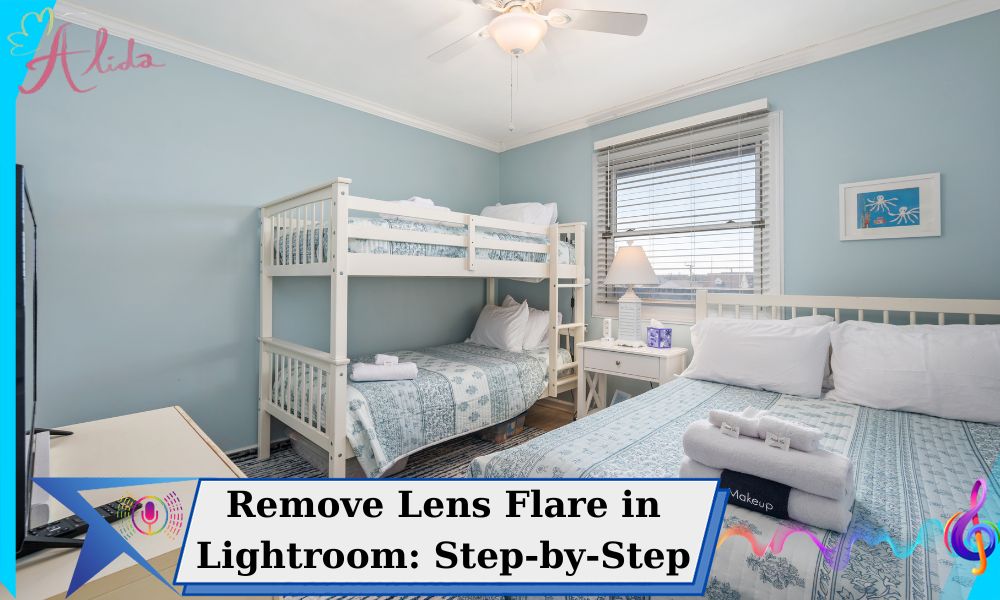In the highly competitive world of real estate photography, image sharpness is one of the most critical factors for success. Buyers rely on visuals to form an impression of a property, and clear, sharp photos play a huge role in attracting attention. Whether you’re a professional photographer or a real estate agent managing your own listings, learning how to sharpen real estate photos can significantly enhance the impact of your images and increase client engagement.
This guide will walk you through the importance of sharpness in real estate photography and introduce various techniques in Photoshop to ensure your photos are crisp, detailed, and captivating.
Why Sharpening Real Estate Photos Matters
Image sharpness is crucial in real estate photography because it helps highlight the property’s finest details. A sharp photo makes architectural features, interior design, and even the smallest touches—like texture on walls or patterns in flooring—stand out. These small details can make a substantial difference in the perception of the property, encouraging potential buyers to explore further.
When you sharpen your real estate photos effectively, you ensure that nothing is lost in the image. Sharpness emphasizes the cleanliness of the property, the accuracy of color tones, and the appeal of rooms and exteriors. Buyers expect high-quality, professional images, and sharpening is an essential technique to meet those expectations.
Sharpen Real Estate Photos with Photoshop Techniques
Photoshop provides powerful tools to enhance sharpness and clarify details in your real estate images. Below are some of the most effective sharpening techniques:
1. Unsharp Mask Filter
The Unsharp Mask filter is a popular and versatile tool for sharpening. While its name might sound counterintuitive, it’s highly effective for enhancing image details. Here’s how to use it:
- Open your image in Photoshop and go to Filter > Sharpen > Unsharp Mask.
- Amount: This controls the intensity of the sharpening effect. A value of 100-150% usually works well for real estate images.
- Radius: Determines how many pixels surrounding the edges will be affected. A small radius (1-2 pixels) is typically best for real estate photography.
- Threshold: This setting helps to control how different the sharpened pixels need to be from their neighbors. A low threshold (around 0-3) helps prevent noise in smooth areas like skies or walls.
2. High Pass Filter
The High Pass Filter is a non-destructive method that allows you to sharpen the edges while leaving the smoother areas of the image untouched. Here’s how to apply it:
- Duplicate your image layer.
- Apply the High Pass Filter by going to Filter > Other > High Pass. Adjust the radius to highlight the edges without over-sharpening.
- Change the duplicate layer’s blending mode to Overlay or Soft Light. This will blend the sharpened edges with the original image, enhancing overall clarity.
This technique is especially useful when you need to sharpen specific areas, such as furniture, windows, or architectural lines.
3. Smart Sharpen Filter
For precise sharpening, Smart Sharpen is an excellent tool. It provides more control over the sharpening process compared to the Unsharp Mask:
- Go to Filter > Sharpen > Smart Sharpen.
- Adjust the Amount to control how much sharpening is applied.
- Use the Radius setting to control the width of the sharpened edges, and refine the image further by adjusting the Reduce Noise slider to minimize any unwanted noise.
Smart Sharpen is especially useful for detailed edge refinement, especially in architectural shots where every line and feature needs to be clear and precise.
4. Camera RAW Sharpening
If you’re working with RAW files, Photoshop’s Camera RAW filter provides a significant advantage in sharpening. RAW images contain more information, allowing you to make finer adjustments without compromising quality.
- In the Camera RAW filter, use the Detail Panel for sharpening.
- Adjust the Amount, Radius, Detail, and Masking sliders to sharpen the image.
- The Masking slider is particularly useful for sharpening only the edges and avoiding noise in flat areas like skies or walls.
Sharpening in Camera RAW allows for a more natural look and ensures that you have full control over the editing process.
Factors to Consider When Choosing Sharpening Tools
The right sharpening technique depends on the conditions and the specific needs of your photos. Here are some factors to keep in mind when choosing your sharpening tools:
Bright Light Conditions
When shooting in bright light, the contrast between dark and light areas is more pronounced. This means you can use stronger sharpening without introducing too much noise. Adjust the Radius and Amount to enhance edges without overexposing highlights.
Low Light Conditions
In low-light conditions, real estate photos may appear softer, especially in areas like the corners of a room. Sharpening helps enhance detail, but be cautious with noise. Use lower Radius values to prevent graininess, and consider using the Noise Reduction options in Photoshop or Lightroom.
Selective Sharpening
Sometimes, you may only need to sharpen certain areas of a photo. This can be achieved by using Layer Masks or the Brush Tool. By selectively sharpening parts of the image (such as furniture, signs, or artwork), you can draw attention to key features without over-sharpening the entire photo.
Clarity Sliders and Layer Masks
To enhance certain areas while avoiding global sharpening, use Clarity sliders in Lightroom or Photoshop and apply Layer Masks to adjust specific parts of the image. This technique ensures that soft areas remain smooth while essential details are highlighted.
Troubleshooting Sharpen Real Estate Photos Issues
While sharpening can enhance your photos, it can also introduce issues like halo effects and noise. Here’s how to troubleshoot:
- Halo Effects: These occur when too much sharpening is applied around high-contrast edges. To avoid halos, use a lower Radius and apply the sharpening gradually.
- Noise: Noise can appear in areas like skies or shadows. Use Noise Reduction tools in Photoshop or Lightroom to smooth out grainy textures without losing sharpness in the key areas.
Conclusion
Sharpening real estate photos is an essential step in the editing process that can dramatically improve the quality of your images. By mastering tools like the Unsharp Mask, High Pass Filter, Smart Sharpen, and Camera RAW, you can enhance the sharpness and clarity of your images, making them more appealing to potential buyers.
If you’re looking for professional photo editing services to sharpen and clarify your real estate images, Alida Photo Editing Services is here to help. Our expert team specializes in real estate photo enhancements, ensuring that your property photos stand out and make a lasting impression.
For more information or to get started, contact us at photonews121@gmail.com. Let us help you create visually stunning, high-quality real estate photos that attract more buyers and close deals faster.








